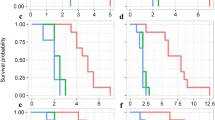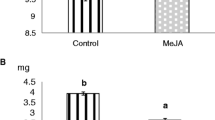Summary.
Tannins are plant defense compounds that exhibit antibiotic (e.g. toxic) and antixenotic (e.g. repellent) effects against an array of plant pests. They are broadly divided into two major groups, hydrolysable tannins (gallotannins and ellagitannins) and proanthocyanidins, each with an undetermined number of compounds. We investigated constitutive levels of hydrolysable tannins and proanthocyanidins in the leaves and stems of American (Castanea dentata Marshall) (Fagales: Fagaceae) and Chinese (C. mollissima Blume) chestnut. American chestnut contained more proanthocyanidins in leaves and stems than Chinese chestnut, but Chinese chestnut contained more foliar hydrolysable tannins. Regardless of these differences, gypsy moth (Lymantria dispar L, Lepidoptera: Lymantriidae) performance did not differ when fed American and Chinese chestnuts. We also investigated the effects of jasmonic acid (JA) treatment on differential tannin induction in American and Chinese chestnut leaves and stems. JA treatment increased proanthocyanidins in American chestnut stems and hydrolysable tannins in both tissue types of American chestnut, but did not influence tannin concentrations in Chinese chestnut leaves or stems. HPLC-ESI-MS analysis of pooled samples suggested that hydrolysable tannins in each tissue were qualitatively comprised primarily of ellagitannins, and JA generally increased the number of hydrolysable tannins that could be detected by ESI-MS. Third, we investigated the performance of gypsy moths on JA treated and untreated American and Chinese chestnut. Caterpillar relative growth was not influenced by JA treatment on Chinese chestnut, but decreased in response to JA application on American chestnut. Our results indicate that JA-dependent defenses differ between these chestnut species. This study improves our understanding of ecologically important differences in tannin induction and herbivore susceptibility in Castanea, and has important implications in efforts for American chestnut restoration and commercial chestnut production.
Similar content being viewed by others
Author information
Authors and Affiliations
Corresponding author
Rights and permissions
About this article
Cite this article
Cooper, W.R., Rieske, L.K. Differential responses in American (Castanea dentata Marshall) and Chinese (C. mollissima Blume) chestnut (Falales: Fagaceae) to foliar application of jasmonic acid. Chemoecology 18, 121–127 (2008). https://doi.org/10.1007/s00049-008-0399-y
Received:
Accepted:
Published:
Issue Date:
DOI: https://doi.org/10.1007/s00049-008-0399-y




